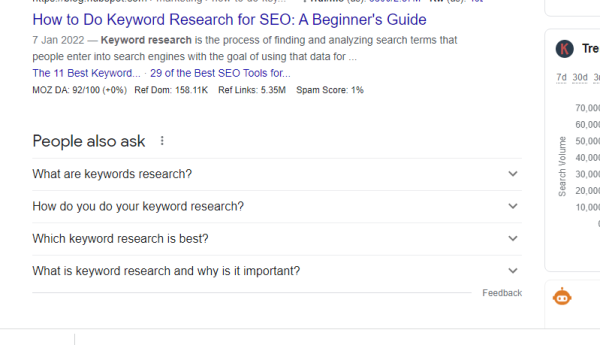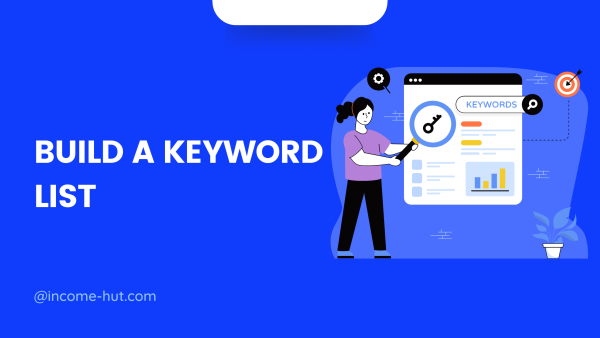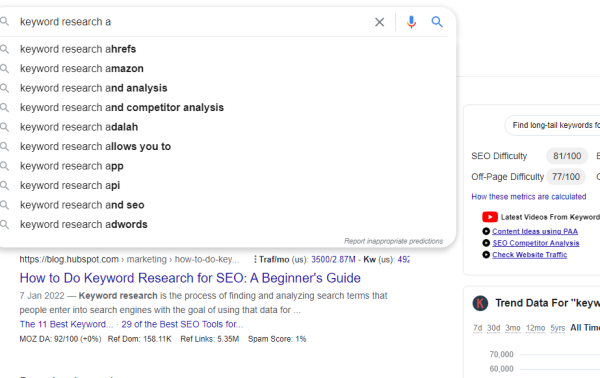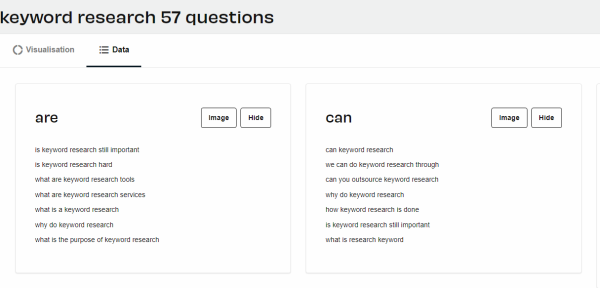No products in the cart.
SEO
What Is The Main Purpose Of Using Keyword In SEO
Summary
what is the main purpose of using keyword in SEO? When it comes to SEO, keywords still matter a lot. Here’s why:
Keywords are the words and phrases that people use in search engines when conducting a search. Keywords are utilized by search engines to identify your website’s topic. They may be as simple as a single word or as complex as full phrases and are used to inform website content in order to boost search traffic. Your primary keywords should be the words and phrases that describe what your material is about.
If you want to boost the quality of your backlinks, you’ll need something unique on your site that will entice people to link to it. So make sure that all of your content is inspired by your SEO keywords. Write about them, think about them, and let them guide your content creation. By doing so, you’ll be sure to satisfy searchers’ needs and increase your website’s visibility in search engine results pages (SERPs).
Find out why keywords are important, how to find the best keywords to target and build a content map to start generating traffic to your site.

Why Is An SEO Keyword Important
When it comes to SEO, keywords are essential. They tell search engines what your website is about and help to connect your target audience with your site. However, effective use of keywords requires research and optimization, so it’s important to take the time to do it right.
When researching keywords, you’ll want to look for ones that are relevant to your brand and audience, as well as those that have a high search volume. Keywords are a powerful marketing tool. You can utilize tools like Google Keyword Planner and Keywords Everywhere to help you discover the best terms for your website.
Once you’ve selected some good keywords, it’s important to optimize them throughout your website. This includes using them in your website’s title tag, meta description, header tags, and throughout the body of your content. You can also use them in paid search ads and social media posts.
When done correctly, keyword optimization can help you increase your website’s traffic and connect with more of your target audience. So, if you’re not yet taking advantage of keywords for SEO, now is the time to start.
How To Find The Best SEO Keyword To Target
Choose A Keyword For Your Topical Content Strategy
When it comes to choosing a keyword for your topical content strategy, it’s important to look at the bigger picture. Google offers a few different ways to get an idea of what users are searching for.
The first place to start is the homepage. Start typing in your initial keyword ideas and look for relevant terms that Google tries to auto-fill. Add them to your list.
Next, take a closer look at the titles of the first-page search results. See if you can identify any repeating themes or words. Themes can give you an idea of what type of content users are looking for, while words can clue you into user intent.

Finally, check out the People Also Ask (PAA) section. This is another part of the Google search results that’s worth taking a look at. People Also Ask questions are the clearest view into search intent the engine has to offer. Aim to answer all relevant questions as part of your strategy so that Google sees your website as an authority on the subject.
When it comes to choosing keywords, you don’t want to just go with the ones that have high search volume. Although high search volume keywords are attractive because of the number of people who are searching for them, they’re also usually very competitive. So it’s important to also look at other factors, like how easy it is to rank for them and how likely people are to convert after clicking on them.
There are a lot of different ways to find good keywords. You can use tools like Google AdWords Keyword Planner or SEMrush to get data on search volume and competition. Or you can use sites like Moz or Ahrefs to see how hard it would be to rank for a particular keyword.
But don’t forget about keywords that have low or no search volume. Even though they might not be as popular, they could still be valuable for your business if there’s not a lot of competition for them and you’re confident you can rank well for them. So don’t discount these keywords just because they’re not being searched for as much. There’s still potential there.

Build A Keyword List
The Google Keyword Planner is a great tool for finding keywords for your business. It is free to use, and you can find keyword ideas from a URL. This makes it a great tool for spying on your competitors and stealing their keywords.
Just paste one of their URLs into the planner, and select “Entire site” from the drop-down. You will get a list of keywords that your competitor is targeting.
Keywords Everywhere is a great tool for consolidating keyword research metrics. It pulls in data such as the keyword’s monthly search volume, the average cost per click, and competitiveness.
You can also use Keywords Everywhere to find keyword ideas without any of the legwork, and get key phrases like this directly from your browser, with real-time statistics.
Just remember to look only for keywords that contain three terms or more. This will give you a list of high-value keywords that you can target in your content.
So head over to any of your competitor’s best content and use Keywords Everywhere’s “Analyze Page” tool. You might just be surprised at the valuable insights you uncover.
Look For Long-Tail Keywords
SEO is the practice of optimizing a website for Google search with the goal of earning higher web traffic levels and improving the visibility of the site. While it is important to target popular keywords in your SEO strategy, it is also crucial to research long-tail keywords.
What are long-tail keywords? They are phrases that are longer and more specific than general keywords. For example, “SEO” is a general keyword, while “SEO tips for small businesses” is a long-tail keyword. Long-tail keywords are more targeted, and because they are less common, they tend to have lower competition levels.

The Alphabet Soup Technique is a great way to come up with new long-tail keywords. To use this technique, simply enter a seed keyword and add an extra letter from the alphabet. As you type, the search engine will begin showing autocomplete suggestions (fresh keyword ideas).
Targeting the right keywords is essential for a successful SEO campaign. By using the Alphabet Soup Technique and researching long-tail keywords, you can be sure that your website is targeting the right phrases and obtaining the best possible results.
Expand Your List Of Keywords
Answer The Public is a great tool for getting ideas for keywords to target for your paid search and organic traffic campaigns. By typing in a question into the search bar, you can get an idea of what people are searching for related to that topic.

You will need a paid plan if you want to see the monthly volume of searches for each keyword, as well as the difficulty and competition levels. You can do this with keywords everywhere extension if you prefer.
While Answer The Public isn’t the only tool you should use for your keyword research, it’s a great place to start. By targeting keywords that have high volumes of searches and low competition levels, you can optimize your campaigns to get the most bang for your buck.

Content Strategy Mapping
So you’ve got a list of keywords, but what’s next?
Now it’s time to figure out how to best target those keywords. And the first step is to understand your competition.
To start, you’ll want to look at the current rankings for each keyword. This will give you an idea of how difficult it will be to rank for that keyword. You can use a tool like MozBar to get this information.
Once you have an idea of the competition, you’ll need to determine the volume and difficulty of each keyword. The higher the volume and difficulty, the harder it will be to rank. But don’t worry, you don’t have to target every high-volume, high-difficulty keyword. Start by targeting some low-hanging fruit, and then move on to more difficult keywords.
Understanding your competition is key to a successful content strategy. So make sure you take the time to map out your competition and determine which keywords are the best fit for your site.
Plan Your Content
Creating quality content is essential for any business, whether it’s a website, blog, or even just a landing page. However, creating great content can be a daunting task – especially if you’re not sure where to start. That’s where the content mapping strategy comes in.
The first step is to brainstorm important language for your products/services. This can be done by making a list of keywords and topics related to your business. Once you have a list of keywords, you can then perform thorough research to find out what kind of content people are already looking for online.
After doing your research, you’ll want to narrow down your list of keyword targets to a more manageable number. It’s important to consider your competitors and the SERPs when doing this, as you want to make sure your content is as competitive as possible.
Finally, avoid using shortcuts or rushing the procedure. Quality content takes time and effort to produce – but it’s well worth it in the end. By following these steps, you’ll be able to create great content that will help your business succeed online.
Where To Add Your Keywords
When it comes to on-page SEO, there are a few key things to keep in mind. The first is to make sure that your title tag includes your target keywords. You should also include them in your content, but don’t go overboard – a keyword density of about 2% is ideal.
In addition, you should use them in your meta description, as well as in the alt text for any images on your page. Finally, be sure to include internal links to other pages on your site that include your target keywords.
Conclusion
So what is the main purpose of using keyword in SEO, simply put, you do this in order to rank higher on search engines, it is important that you optimize your content for a specific keyword. Although high competition keywords seem like the best strategy, you will be better off targeting low competition keywords that have good search volume. There is no guarantee you will rank for low competition keywords, but if you optimize for your chosen keyword your results can improve in the long run.
This can be done by including the keyword in your title, meta description, and alt text of images while also linking internally to other pages with similar keywords.
So there you have it – a comprehensive guide to SEO keyword research and content strategy mapping. Use this information to help you create quality content that will help your business succeed online. Thanks for reading!
